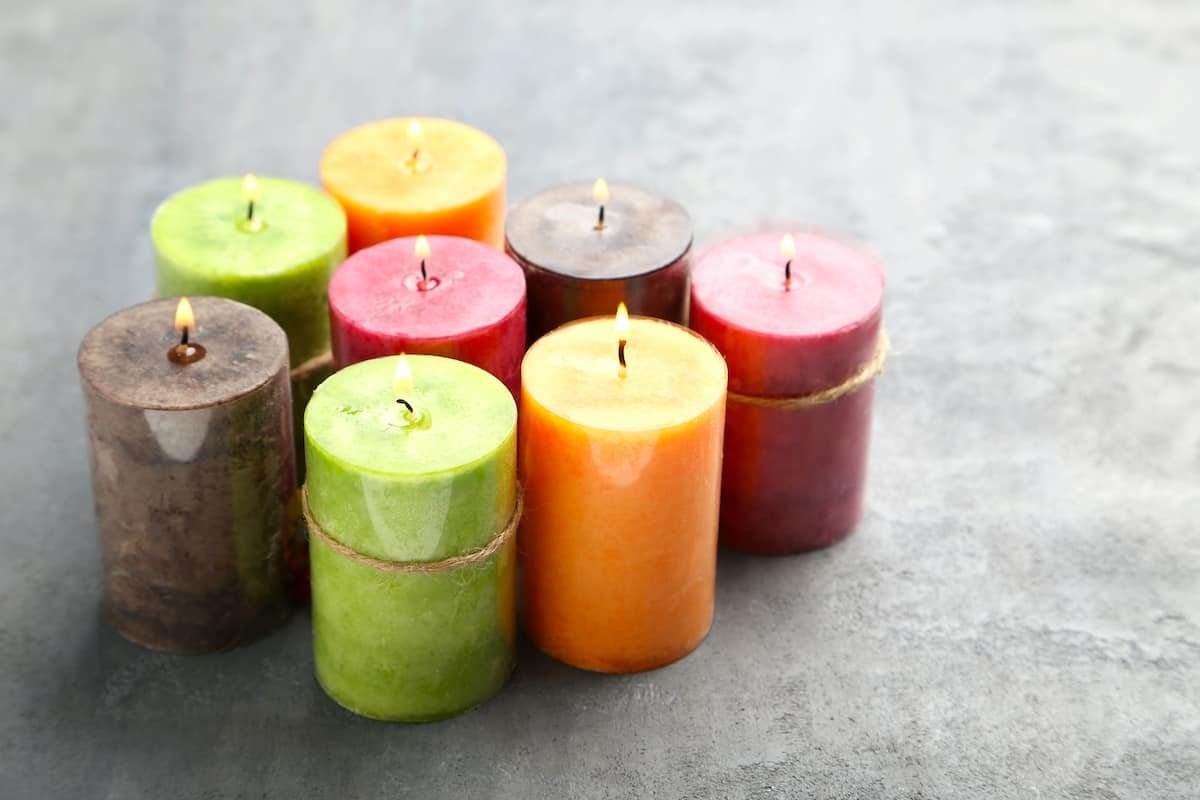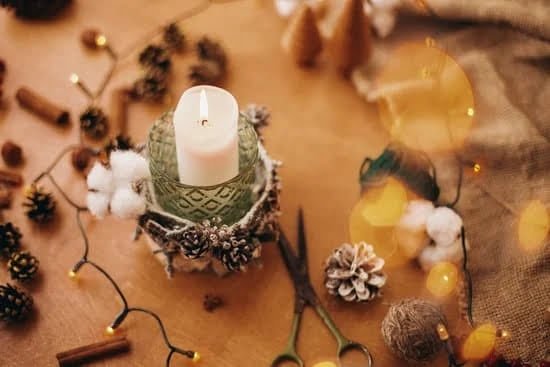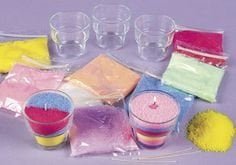Candle making is a beloved craft that allows individuals to create their own unique and personalized candles. Whether you are a beginner or an experienced crafter, understanding the essential materials for candle making is crucial to producing high-quality products. One of the key components in creating candles is selecting the right material for candle making, such as wax, fragrance oils, dyes, wicks, and molds.
When it comes to candle making, there are various types of wax to choose from, each offering different characteristics and benefits. Additionally, having the essential tools like a double boiler, thermometer, stirring utensils, and containers is vital for a successful candle-making process. Adding fragrance to your candles can enhance the overall experience and appeal of your creations.
Furthermore, dyeing techniques and selecting the right wicks are important aspects to consider when making candles. Whether you prefer traditional wicks or wooden wicks, choosing the appropriate size and type can impact the burn time and performance of your candles. Creative ideas for candle molds also offer endless possibilities for crafting unique shapes and designs. Lastly, following safety tips while working with hot wax and other materials is essential to avoid accidents and ensure a safe candle-making experience.
Types of Wax for Candle Making
When it comes to candle making, selecting the right wax is essential to creating high-quality candles. There are several types of wax available, each with its own unique characteristics and benefits. Here are some popular options for candle makers to consider:
- Paraffin Wax: Paraffin wax is one of the most widely used waxes in candle making. It is known for its excellent scent throw and ability to hold color well. However, it is important to note that paraffin wax is derived from petroleum, so some individuals may prefer more natural alternatives.
- Soy Wax: Soy wax is a favorite among eco-conscious candle makers because it is made from soybean oil, a renewable resource. Soy wax has a clean burn and good scent throw, making it a popular choice for many crafters.
- Beeswax: Beeswax is a natural and sustainable option for candle making. It has a subtle honey scent and a beautiful golden color. Beeswax candles burn cleanly and emit negative ions that can help purify the air in your home.
In addition to these traditional waxes, there are also blends available that combine different types of wax to create unique properties in candles. Whether you prefer the classic appeal of paraffin wax or the eco-friendly qualities of soy wax, choosing the right wax will ultimately determine the success of your candle-making endeavors.
Recommended Suppliers for Candle Making Materials
- CandleScience: A popular choice among candle makers, CandleScience offers a wide range of waxes, fragrances, dyes, wicks, and other supplies for candle making.
- Nature’s Garden: Nature’s Garden provides high-quality ingredients for candle making, including various types of wax, fragrance oils, molds, and more.
- Michaels: For those who prefer shopping in person rather than online, Michaels carries an assortment of candle-making materials such as waxes, fragrance oils, molds, and tools.
By exploring different types of wax and sourcing quality materials from reputable suppliers like the ones mentioned above, you can elevate your candle-making skills and create personalized candles that bring joy and ambiance to any space.
Essential Tools for Candle Making
When it comes to creating your own candles at home, having the right tools is essential for a successful and enjoyable experience. Some of the basic tools you will need include a double boiler or microwave-safe container for melting wax, a thermometer to monitor the temperature, stirring utensils like a spatula or wooden spoon, and a heat-resistant surface for pouring the hot wax.
In addition to these basic tools, other essential items that can make the candle making process easier and more efficient include a scale for measuring ingredients accurately, a pouring pitcher for transferring melted wax into candle molds, and various molds or containers for shaping your candles. It’s also helpful to have a wick holder or centering device to keep the wick in place while the wax hardens.
Once you have gathered all the necessary tools for candle making, you can start experimenting with different techniques and designs to create unique and personalized candles. Whether you prefer traditional pillar candles, elegant container candles, or fun-shaped novelty candles, having the right tools on hand will help you bring your creative ideas to life.
Remember that quality tools can make a difference in the final outcome of your candles, so investing in good equipment is worth it in the long run when it comes to creating beautiful and fragrant candles using material for candle making.
Adding Fragrance to Your Candles
When it comes to candle making, adding fragrance is a crucial step to create a delightful atmosphere in your space. There are various options available for incorporating scents into your candles, making the process both fun and customizable.
One popular way to add aroma to your candles is by using fragrance oils specifically designed for candle making. These oils come in a wide range of scents, from soothing lavender to festive cinnamon spice, allowing you to experiment and craft unique combinations.
In addition to fragrance oils, natural ingredients such as dried herbs and flowers can also be used to infuse your candles with subtle and organic scents. For example, dried rose petals can add a romantic touch to your candles, while crushed mint leaves can bring a refreshing aroma. By incorporating natural elements into your candle-making process, you not only enrich the olfactory experience but also add visual interest to your final product.
Furthermore, essential oils are another excellent option for adding fragrance to your candles. Derived from plants, essential oils offer a pure and therapeutic scent that can enhance the ambiance of any room.
Whether you prefer the citrusy notes of lemon or the calming properties of eucalyptus, essential oils provide endless possibilities for creating personalized scents for your candles. Experimenting with different combinations of fragrance oils, natural ingredients, and essential oils will allow you to discover the perfect blend that suits your preferences and enhances your candle-making experience.
| Types of Scents | Examples |
|---|---|
| Fragrance Oils | Lavender, Cinnamon Spice |
| Natural Ingredients | Rose Petals, Mint Leaves |
| Essential Oils | Lemon, Eucalyptus |
Dyeing Techniques for Candle Making
When it comes to making your own candles, adding color can truly elevate the aesthetic appeal of your creation. Dyeing techniques for candle making offer a wide range of options to experiment with, allowing you to customize your candles to suit any style or occasion. Here are some popular dyeing techniques to consider:
- Dipping: This method involves repeatedly dipping a white candle into melted colored wax until the desired hue is achieved. It creates a smooth and even finish on the candle.
- Marbling: By swirling different colors of melted wax together before pouring them into molds, you can create stunning marbled effects on your candles.
- Layering: This technique involves pouring layers of differently colored wax into a mold one at a time, allowing each layer to cool before adding the next. The result is beautiful multi-colored candles.
Experimenting with dyeing techniques not only allows you to create visually appealing candles but also adds a personal touch to your home décor or gifts for loved ones. Whether you prefer vibrant, bold colors or subtle pastel hues, the possibilities are endless when it comes to customizing your candles with color.
Important Tip
When dyeing your candles, always ensure that you use dye specifically designed for candle making. Avoid using regular food coloring or other types of dyes, as they may not mix well with the wax and could affect the burning quality of your candles.
Incorporating various dyeing techniques into your candle making process can be a fun and creative way to explore different color combinations and design possibilities. With practice and experimentation, you can develop your unique style and produce beautiful handcrafted candles that reflect your personality and creativity.
Choosing the Right Wicks for Your Candles
When it comes to choosing the right wicks for your candles, it is essential to consider the type of wax you are using and the size of the container in which the candle will be poured. There are various options available in the market, each designed for specific purposes.
Cotton wicks are a popular choice as they burn cleanly and are suitable for most types of wax, including soy, paraffin, and beeswax. Wood wicks, on the other hand, create a crackling sound when burned, adding an extra sensory experience to your candles.
Another important factor to consider when selecting wicks is the size of your candle. Wicks come in different thicknesses to accommodate various candle diameters.
A wick that is too thin may result in a tunneling effect where wax does not melt evenly, while a wick that is too thick can cause excessive flickering and soot buildup. It is recommended to refer to wick size charts provided by manufacturers or suppliers to ensure you choose the right wick for your specific candle-making project.
In addition to considering the type of wax and candle size, it is also crucial to think about any additives or fragrances you plan on incorporating into your candles. Some materials used for candle making require specific types of wicks to burn effectively when additional ingredients are added. Experimenting with different wick sizes and types can help you achieve the desired burn time and fragrance throw for your homemade candles.
| Types of Wicks | Suitable Candle Types |
|---|---|
| Cotton Wicks | Soy, Paraffin, Beeswax |
| Wood Wicks | Provide a crackling sound experience |
Creative Ideas for Candle Molds
When it comes to making candles, the type of mold you use can greatly influence the final look and feel of your candles. There are various creative ideas for candle molds that can elevate your candle-making experience and make your creations stand out. From traditional shapes to unique designs, choosing the right mold can unlock endless possibilities for your candle projects.
Silicone Molds
Silicone molds have become increasingly popular among candle makers due to their versatility and ease of use. These molds come in a wide range of shapes and sizes, allowing you to create intricate designs with minimal effort. Whether you prefer classic pillar candles or novelty shapes like flowers and animals, silicone molds offer endless options for your candle-making endeavors.
Upcycled Molds
For those looking to add a touch of sustainability to their candle-making process, consider using upcycled materials as molds. From old glass jars and tin cans to vintage teacups and silicone ice cube trays, repurposing household items as candle molds adds a unique flair to your creations while reducing waste. Get creative with your choices and experiment with different textures and shapes for truly one-of-a-kind candles.
Custom-Made Molds
If you’re feeling extra adventurous in your candle-making journey, consider investing in custom-made molds tailored to your specific preferences. Whether you want personalized initials or themed shapes that reflect your style, custom molds allow you to express your creativity in ways that standard molds cannot. Collaborate with a professional mold maker or explore DIY mold-making techniques to bring your vision to life in the form of beautifully crafted candles.
With these creative ideas for candle molds, you can take your candle-making skills to the next level and unleash your imagination in crafting unique and personalized candles that will delight both yourself and others. Experiment with different mold options, mix-and-match techniques, and let your creativity shine through in every hand-poured creation you make using quality material for candle making.
Safety Tips for Candle Making
Proper Workspace Setup
When working with materials for candle making, it is important to set up a designated workspace that is clean, well-ventilated, and away from any flammable objects. Make sure to have a flat surface to work on and keep all supplies organized and within reach. This will help prevent accidents and make the candle-making process more enjoyable.
Use of Protective Gear
To ensure your safety while working with materials for candle making, it is recommended to wear appropriate protective gear such as heat-resistant gloves and safety goggles. These will help protect your skin and eyes from hot wax and any potential splashes or spills. Remember that safety should always come first when engaging in any craft or DIY project.
Proper Handling of Hot Wax
One of the most crucial safety tips when working with materials for candle making is to handle hot wax with care. Always use a double boiler or melting pot to melt the wax gently, avoiding direct heat sources that could cause fires. When pouring the wax into molds, do so slowly and steadily to prevent spills or splatters.
Additionally, never leave melting wax unattended as it can quickly reach high temperatures and pose a fire hazard. By following these safety tips, you can enjoy creating beautiful candles at home without compromising your well-being.
Where to Purchase Quality Material for Candle Making
When it comes to creating your own candles at home, finding quality materials is essential to ensure that your finished product is not only beautiful but also safe to burn. There are several options for purchasing materials for candle making, both online and in physical stores. One popular choice is to buy from specialty candle-making suppliers who offer a wide range of waxes, fragrances, dyes, wicks, and molds specifically designed for crafting candles.
Online retailers such as Amazon, CandleScience, and The Flaming Candle Company are excellent resources for purchasing high-quality materials for candle making. These websites not only have a variety of options to choose from but also provide detailed descriptions and reviews to help you make informed decisions about the products you buy. Additionally, many online stores offer convenient shipping options, allowing you to have all the materials you need delivered right to your doorstep.
If you prefer shopping in person or want to see and feel the materials before purchasing them, local craft stores and hobby shops may also carry supplies for candle making. Places like Michaels, Joann Fabrics, or even some hardware stores often have a selection of waxes, fragrances, wicks, and dyes that can be used for candle making.
While the variety may not be as extensive as what you find online specialty shops, these stores are convenient options when you need materials quickly or want to support local businesses.
Whether you choose to shop online or in-store, remember to prioritize quality when selecting materials for your candle-making projects. After all, the key to creating beautiful candles lies in using the best ingredients available.
Conclusion
Creating your own candles at home can be a fulfilling and rewarding experience. Not only does it allow you to express your creativity, but it also provides a sense of accomplishment when you see the finished product glowing beautifully in your space. The process of candle making is not only enjoyable but also therapeutic, as you immerse yourself in the soothing scents and colors that you have carefully chosen for your creations.
When it comes to finding quality material for candle making, there are numerous options available online and in craft stores. Whether you prefer soy wax, beeswax, paraffin wax, or coconut wax, each type offers unique characteristics that can enhance the appearance and performance of your candles. Additionally, sourcing fragrance oils, dyes, wicks, and molds from reputable suppliers will ensure that your candles turn out beautifully every time.
In conclusion, the art of candle making is a wonderful way to add a personal touch to your home decor or create thoughtful gifts for loved ones. By experimenting with different wax types, scents, colors, and styles, you can tailor each candle to suit your preferences and create something truly unique.
So why not gather your materials for candle making and start on this creative journey today?Unlock the joy of crafting your own handmade candles at home and let your imagination soar.
Frequently Asked Questions
What Materials Are Used in Candle Making?
Candle making involves the use of various materials such as wax, wicks, fragrances, dyes, containers, and additives. The most common types of wax used are paraffin, soy, beeswax, and palm wax.
Wicks can be made from cotton, wood, or hemp. Fragrances and dyes are added for scent and color, while additives like stearic acid can improve the burning properties of the candles.
What Do I Need to Make My Own Candles?
To make your own candles, you will need the basic materials such as wax, wicks, a heat source like a double boiler or microwave for melting the wax, a thermometer to monitor temperature, fragrance oils or essential oils for scent if desired, candle dye for coloration, a container to pour the melted wax into (like jars or molds), and any additional additives like stearic acid or UV inhibitors.
Tools such as a stirring spoon and scale for measuring ingredients are also necessary.
What Raw Material Is Used to Make Candles?
The primary raw material used to make candles is wax. Different types of wax can be used in candle making including paraffin wax derived from petroleum or mineral oil, soy wax made from soybean oil, beeswax created by honeybees in their hives’ combs, and palm wax obtained from palm tree fruit.
Each type of wax has its own unique characteristics that affect factors like burn time and scent throw in candles.

Welcome to my candle making blog! In this blog, I will be sharing my tips and tricks for making candles. I will also be sharing some of my favorite recipes.





